|
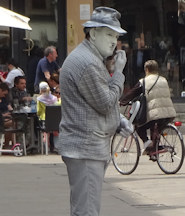 Dwight Peck's personal website Dwight Peck's personal website
Sirmione and the neighborhood, May 2016
Ten days in the home of the Scaligeri and the heretics
You may not find this terribly rewarding unless you're included here, so this is a good time for casual and random browsers to turn back before they get too caught up in the sweep and majesty of the proceedings and can't let go.
Vicenza (1): Santa Corona, Teatro Olimpico, Piazza dei Signori
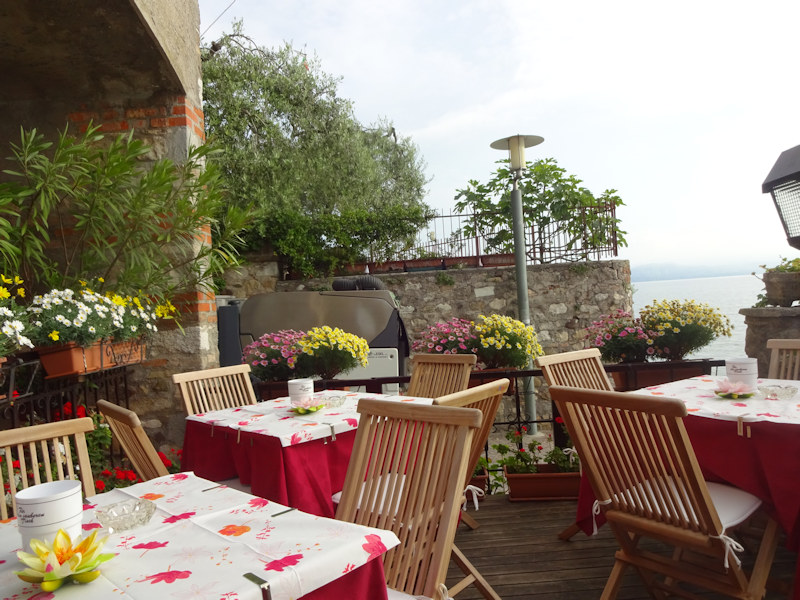
Sirmione in the morning: Breakfast on the terrace of the Hotel Grifone, 14 May 2016

Our balcony (not unlike Juliet's balcony in Verona two days ago)
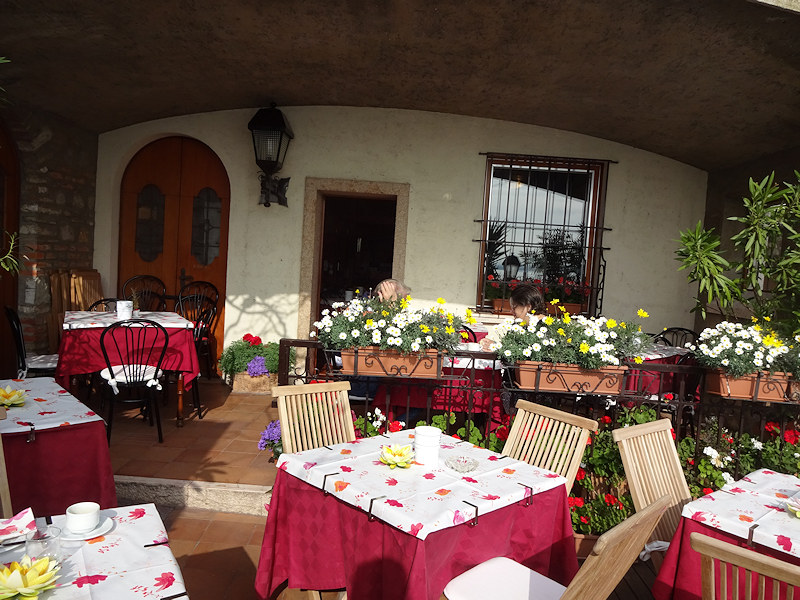
The terrace Grifone in the morning

And the breakfast room
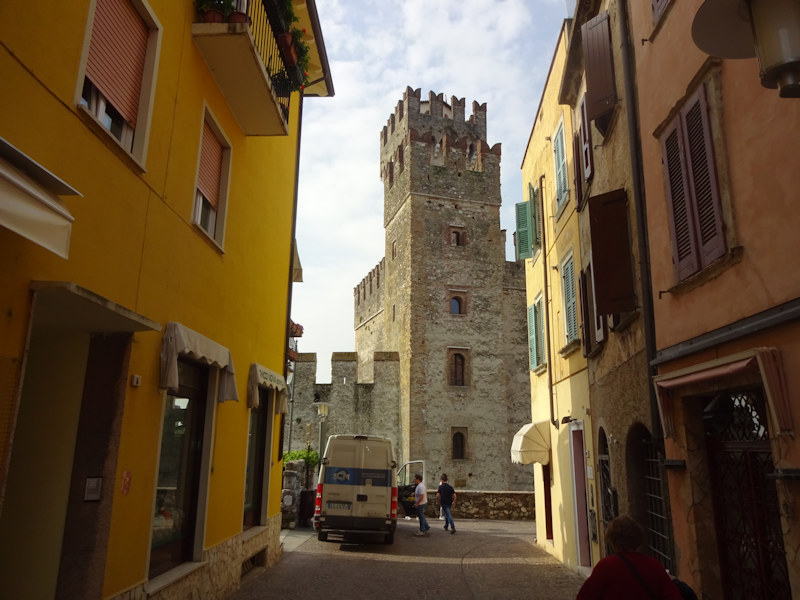
The Castello Scaligero on our way to the carparks
Vicenza
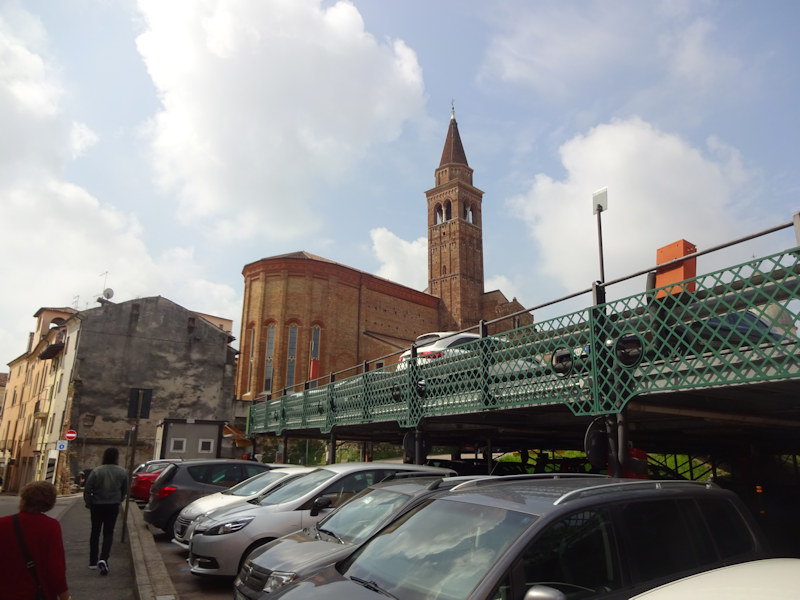
We arrive in Vicenza, a smallish city of 113,000 in the Veneto region, a drive of about an hour from Sirmione, at the Erector-set carpark near the Bacchiglione river. That's the back end of the Gothic church of Santa Corona; we'll go round and see the front end right now.
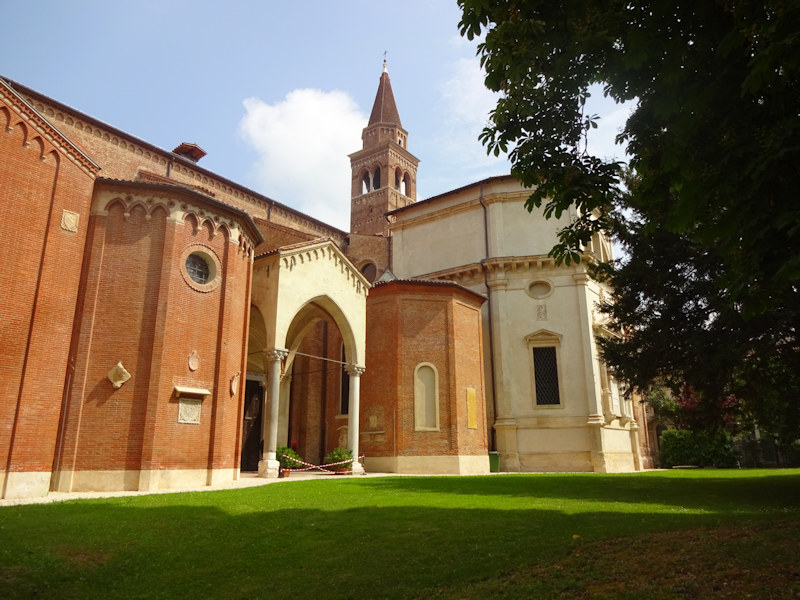
The formerly-Dominican Church of Santa Corona, begun by the local bishop in 1261 to house the relic of a genuine thorn from Christ's "crown of thorns" given to him by King Saint Louis IX as a thoughtful present.
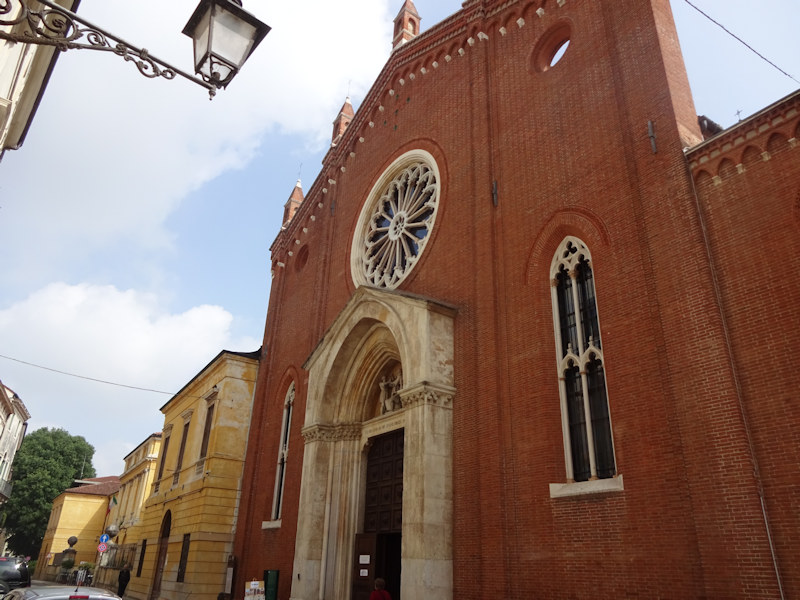
The façade of Santa Corona
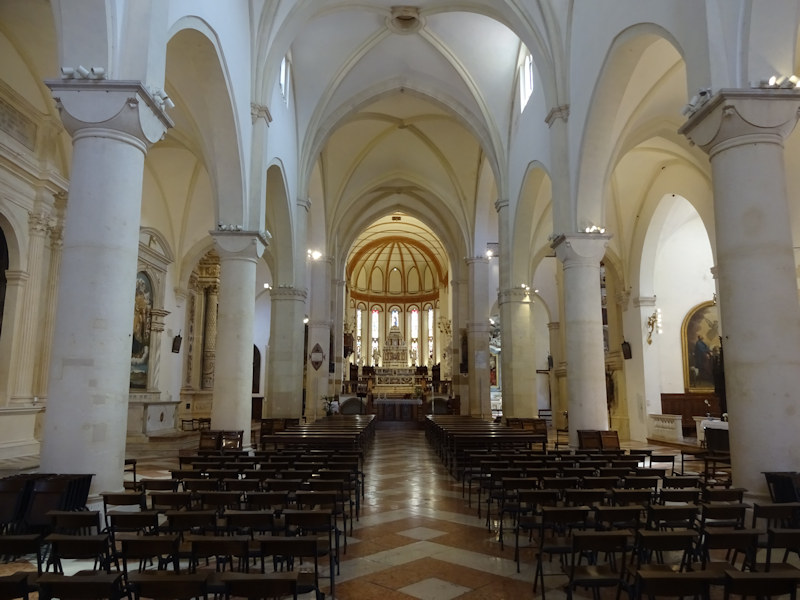
A nave with two aisles, with side chapels from the 16th century

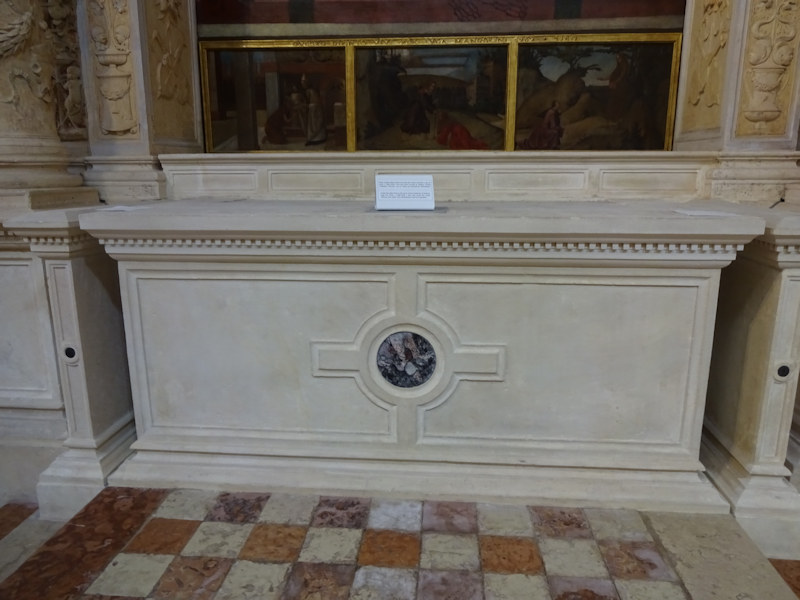
The altar and tomb of the Vicentine Luigi da Porto (1485-1529), "who first wrote the novel 'Romeo and Juliet' from [which] Shakespeare had the inspiration", according to the label (more likely Shakespeare received the tale indirectly through the usual sources like Bandello's Novelle and Painter's Palace of Pleasure).
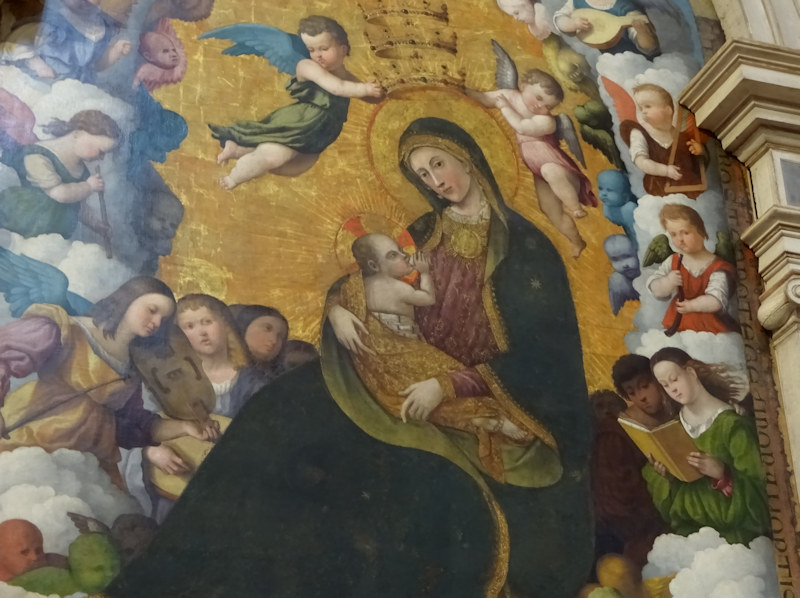
A detail of the 'Madonna of the Stars', by Marcello Fogolino, early 16th century, with unconvincing nursing arrangements
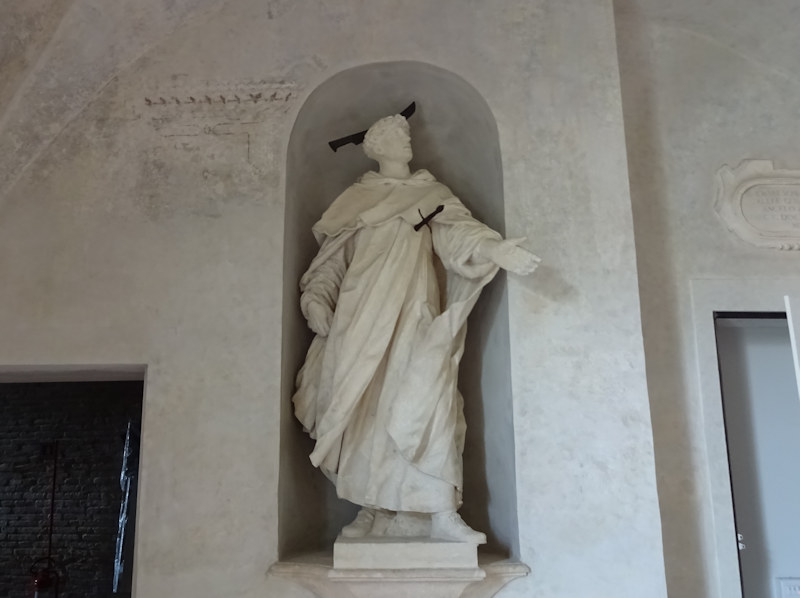
St Peter Martyr, the saint with the meat cleaver, is ubiquitous in these parts; the General Inquisitor famous for hunting down the Cathar heretics, he was murdered near Milan by a Cathar hit team in 1252.

The main altar
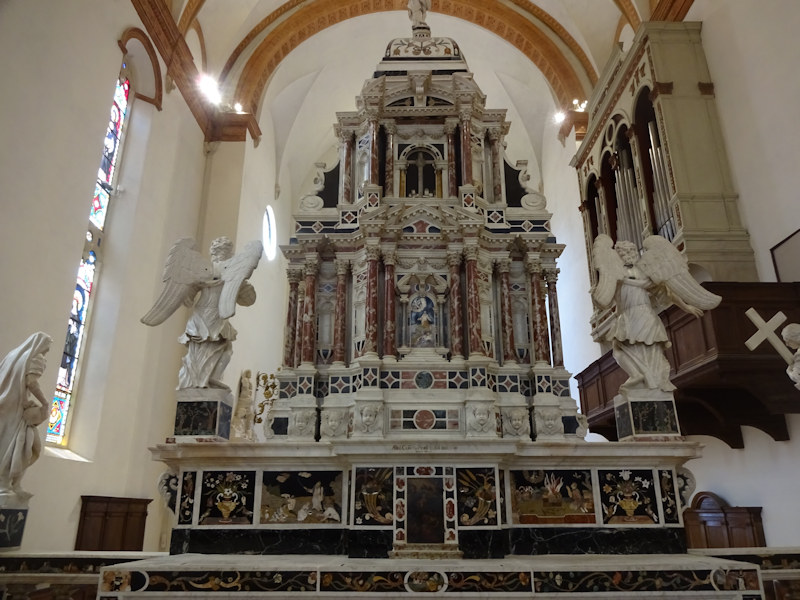
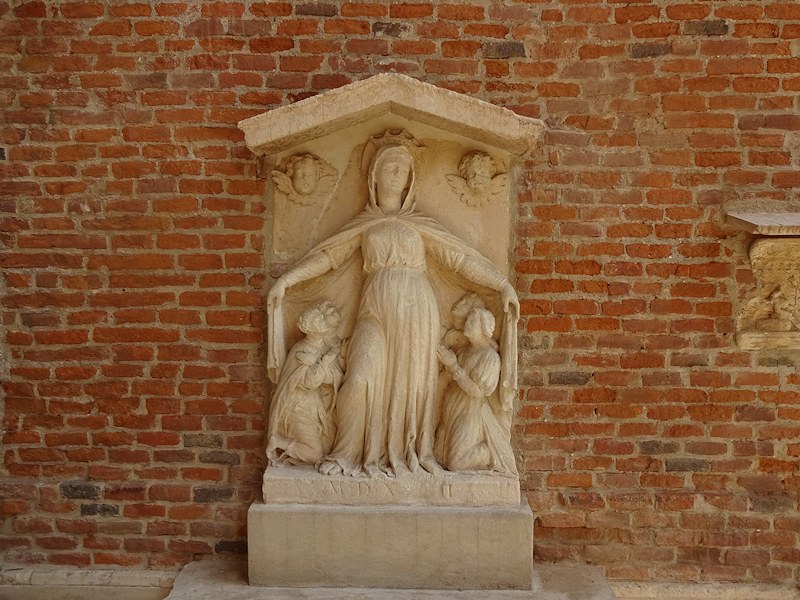
Madonna Misericordia
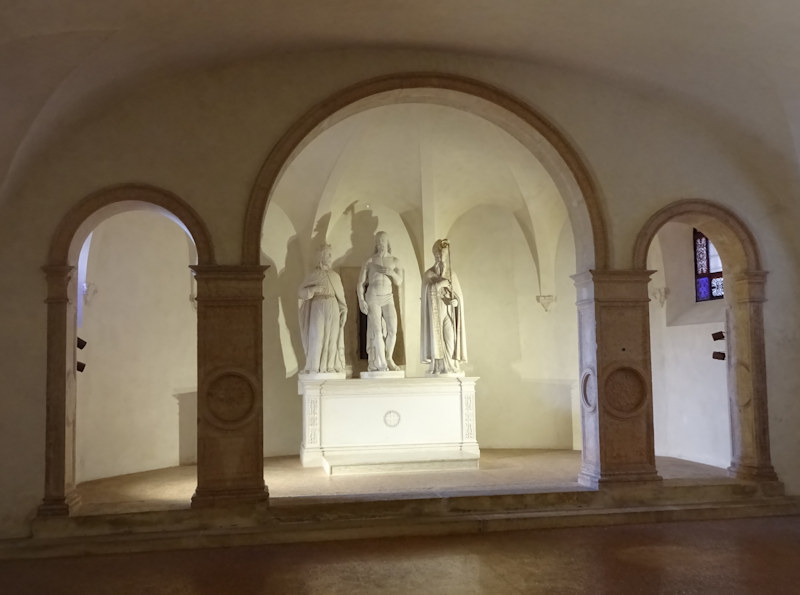
The Vermana Chapel, designed by Andreas Palladio in about 1576 but built a few years after his death in 1580

The 'Baptism of Christ', by Giovanni Bellini, ca. 1502, in the Garzadori Altar
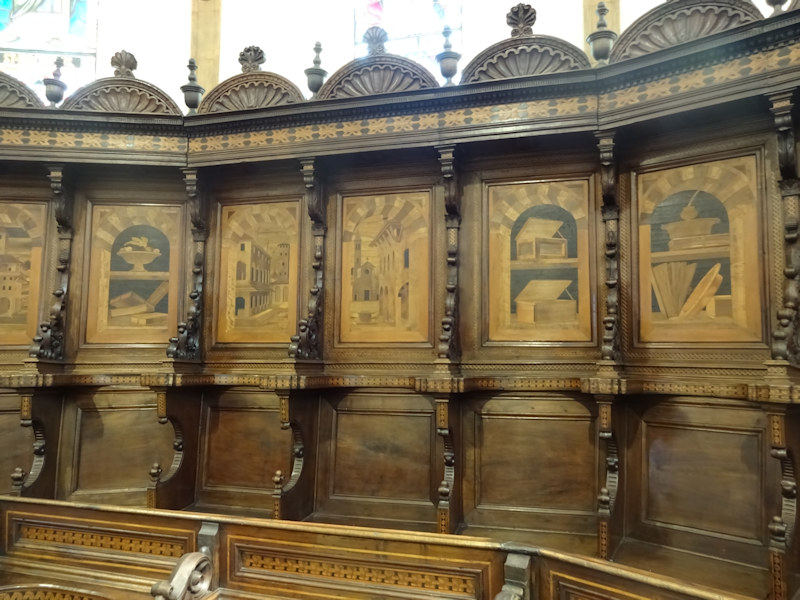
Intarsia inlay around the choir seats
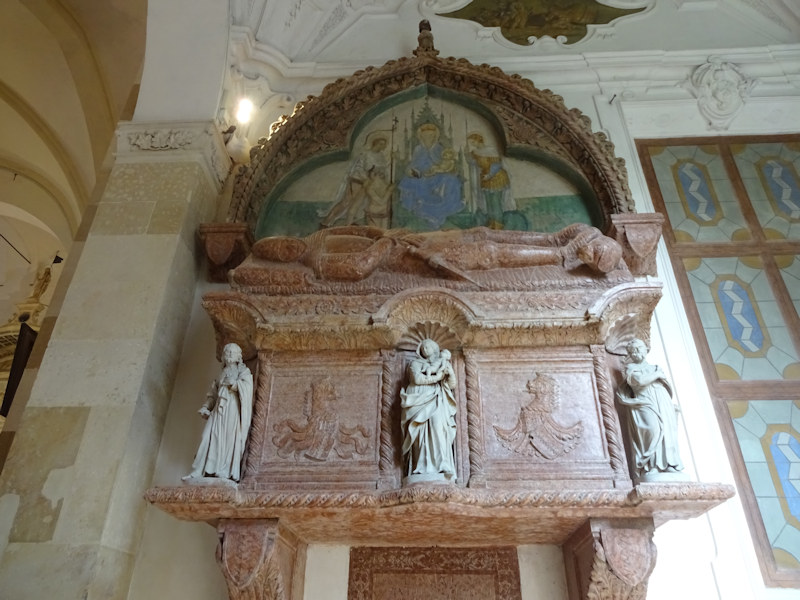
One of the sarcophagi of Marco and Giovanni Thiene, members of a family of money-changers from the village of Thiene who rose to prominence and held important civic and military offices under the della Scala ascendancy. Palladio himself was originally interred in this church as well, but later removed to the 19th century Cimitero Maggiore di Vicenza.
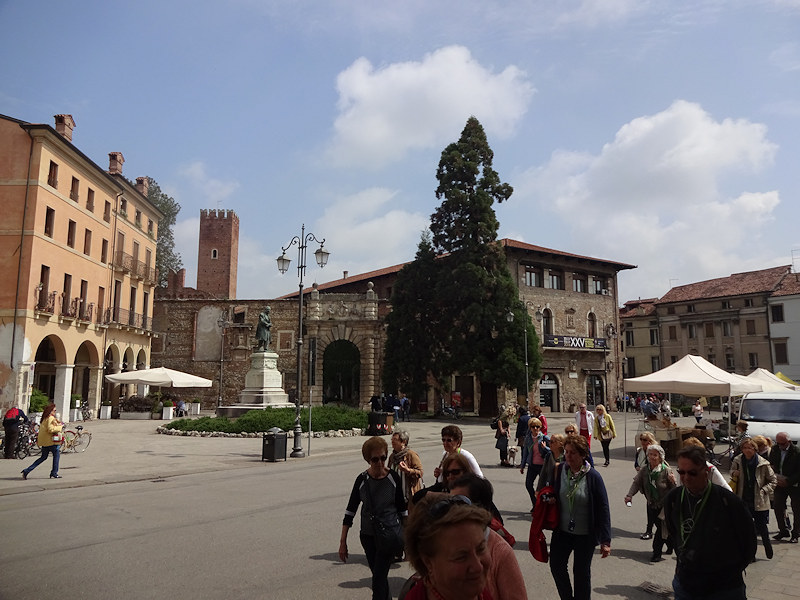
Just down the main street, the Corso Andrea Palladio, near the Ponte degli Angeli over the river Bacchiglioni (off to the right), this is the Teatro Olimpico, designed by Palladio in 1579 to fit into an awkwardly shaped, disused fortress acquired by the Accademia Olimpica, of which he was a member.

Through the fortress gates to the little park within.
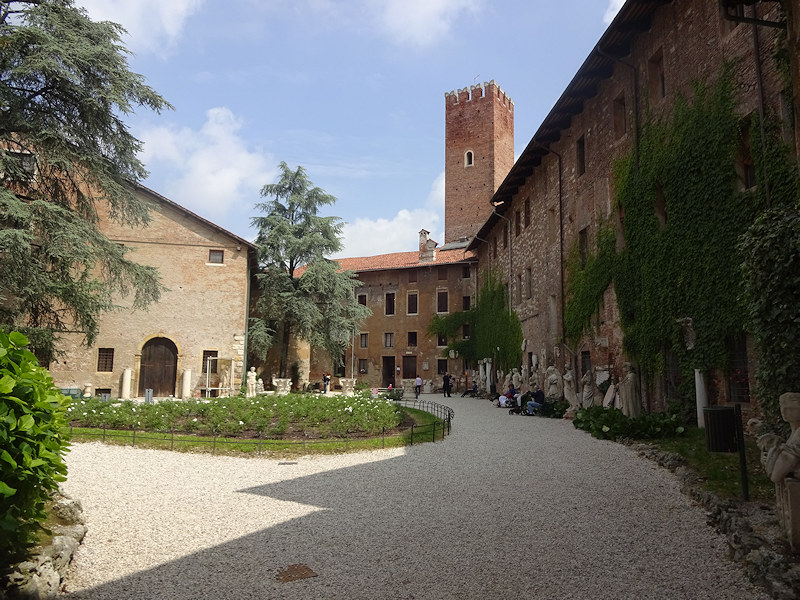
Palladio, who'd studied the architecture of classical theatres for many years, intended this to be authentically modeled on classical Roman theatres; it's the oldest and presently one of only three surviving indoor Renaissance theatres (another of which is the Farnese theatre in Parma).

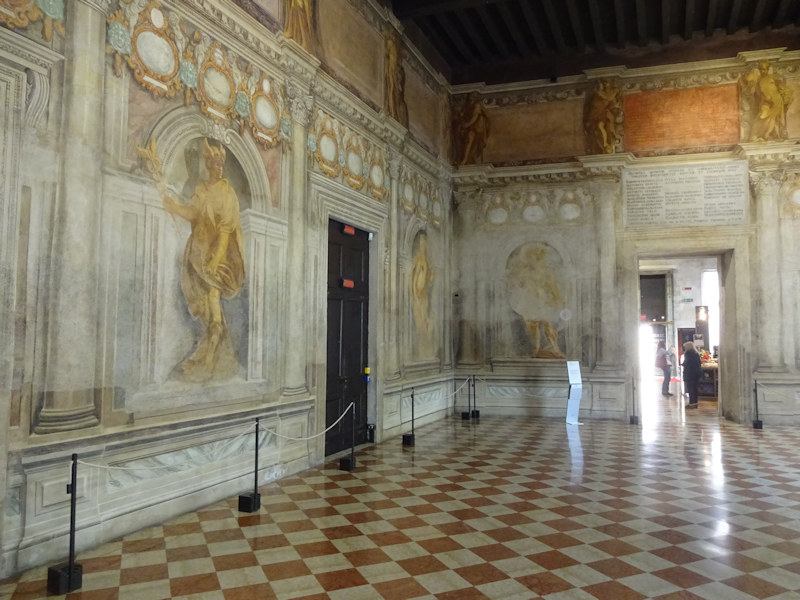
The lobby
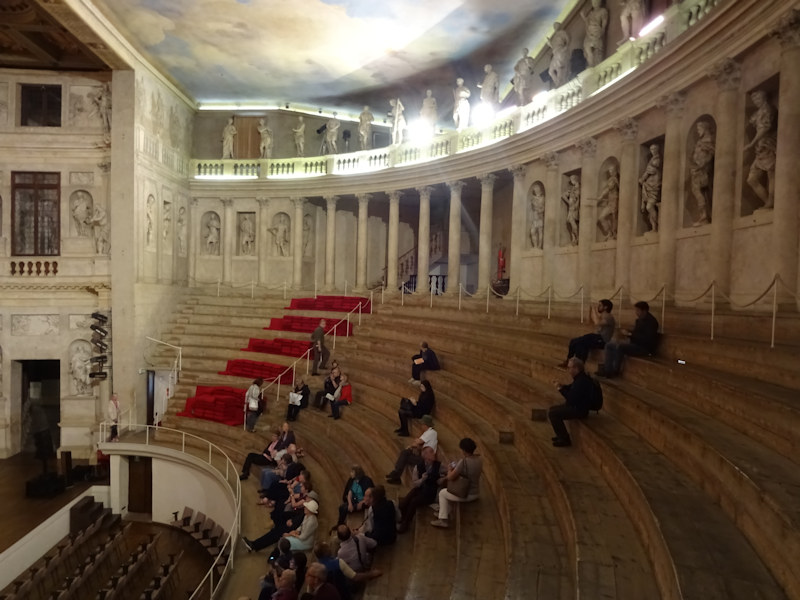
The Teatro Olimpico. Palladio died, at 71, in August 1580, six months after construction had begun, but the work was continued briefly under the direction of his son and then under another prominent Vicentine architect, Vincenzo Scamozzi, following Palladio's designs.

The trompe l'oeil perspective sets are Scamozzi's contribution, however, intended to represent ancient Thebes for the theatre's first production, Sophocles' Oedipus Rex, in 1585, and never changed thereafter. And never bombed, either, even when very heavy Allied bombing damaged or destroyed a large number of Vicenza's monuments and about 2,000 civilians.
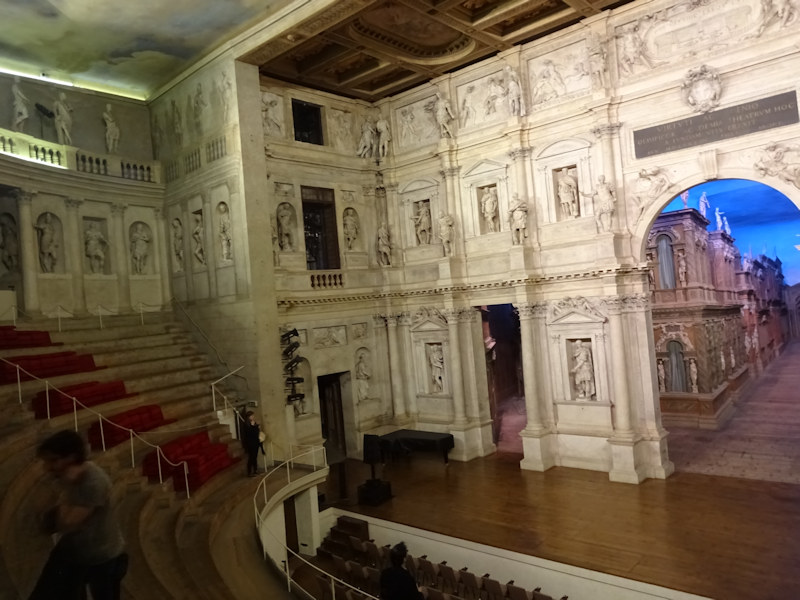
Of the three surviving indoor Renaissance-era theatres, of which the Farnese is the third, the second-oldest, the Teatro all-antica in Sabbioneta (1588), halfway between Cremona and Mantova, was also designed by Scamozzi.

The theatre is still used for plays and musical performances, but for safety reasons the seating is evidently limited to 400. Until 2013, it was also used every year for graduation ceremonies of students from the American Department of Defense high school in Vicenza -- the US military has a major base on the east side of town, including the HQ of the United States Army Africa.
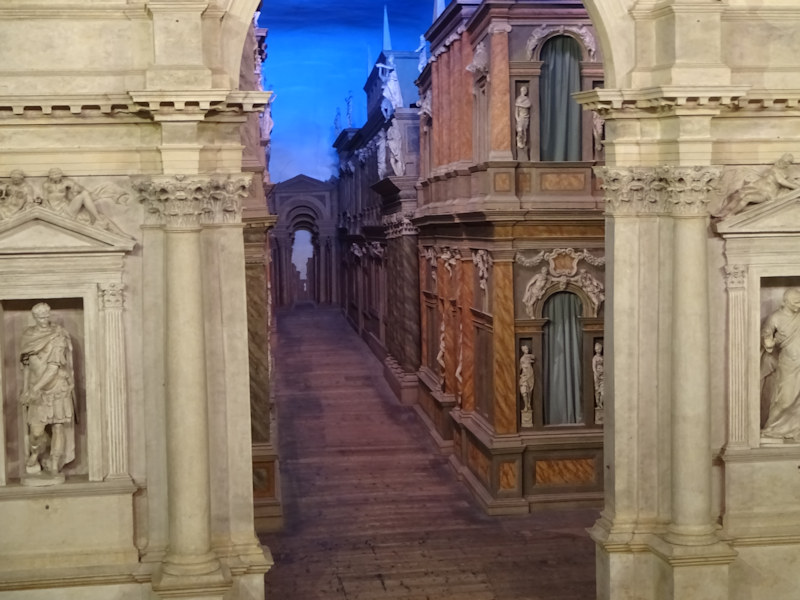
How long is that street, really?!

There are seven apparent corridors providing perspective views of ancient Athens, some of which can be seen from every seat in the theatre.

Back on the street, the Via Palladio looking farther into the centre of town, we're headed for the Palazzo Chiericati and the pinacoteca on the left.

My photo of the Palladio's Palazzo Chiericati only got my shoelaces, so this is borrowed from Google images, taken by Christian Baldin, 2009. |
The Palazzo Chiericati was begun by Palladio, who also designed a country villa for the noble Chiericati family, in 1550, but not completed until the late 17th century. It's raised half a metre by a porch because the Piazza Matteoti in front of it was at that time a cattle market on an island between the little Retrone and Bacchiglione rivers, which flooded frequently.
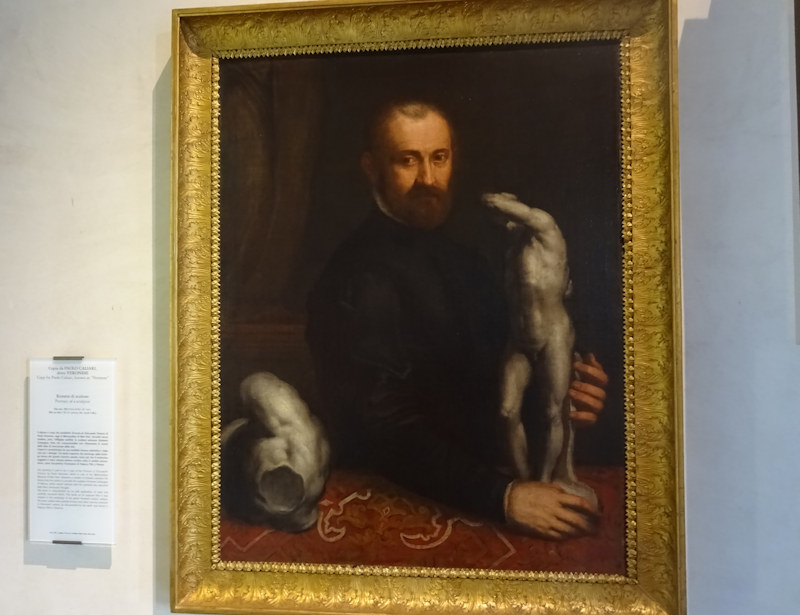
The Palazzo Chiericati went into service as a civic museum in 1855, and subsequently the city's collection of paintings was added. This is described as a copy of a portrait of the sculptor Alessandro Vittorio of Venice and Vicenza, by Veronese, 1570.

A portrait of Isabella Thiene, née Valmarana, perhaps on the joyful occasion of her marriage in 1594, by Girolamo Forni
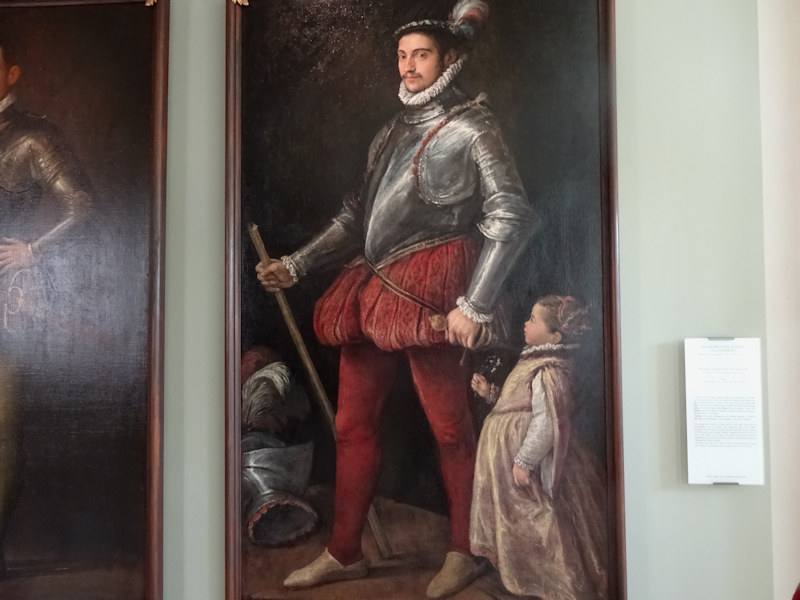
A soldier with a young girl, by Francesco da Ponte, Bassano the Younger, ca. 1580. It's been suggested that the broken lance, the overturned helmet, and the little girl offering flowers indicate that the subject of the painting is presently dead.
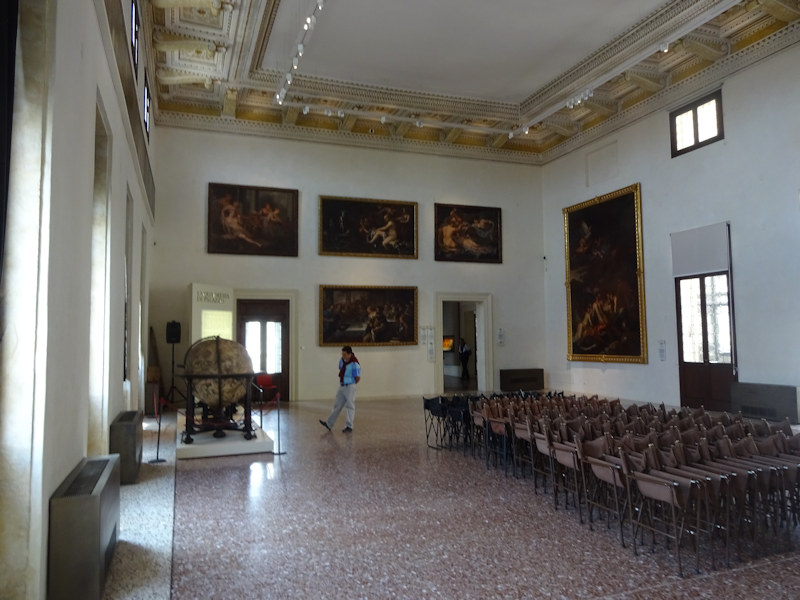

An affectless and boring beheading of Holofernes, by Giuseppe Vermiglio, ca. 1620

"The four ages of man", Antony van Dyck, painted in the 1620s during his sojourn in Italy
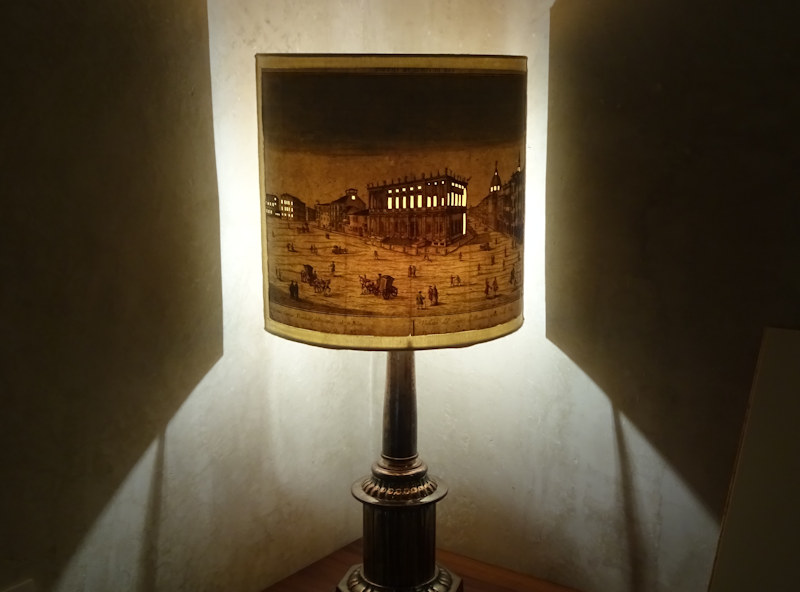
A Palazzo Chiericati lampshade
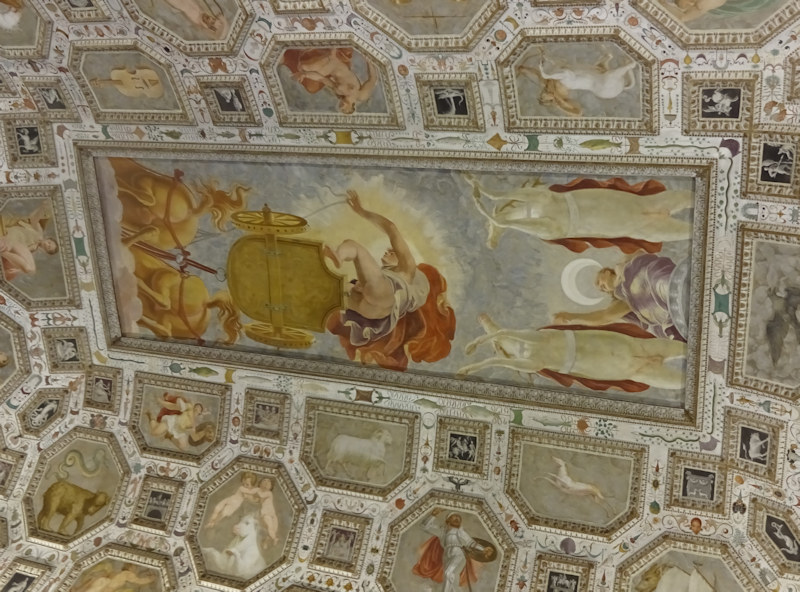
Noble Phaeton from his very worst camera angle

We're back out on the Via Palladio high street (in Roman times, the decumanus maximus). Palladian buildings abound in and around Vicenza, and thus the present name of the UNESCO World Heritage property is City of Vicenza and the Palladian Villas of the Veneto, first listed in 1994; before its extension in 1996 it was called "Vicenza, City of Palladio".
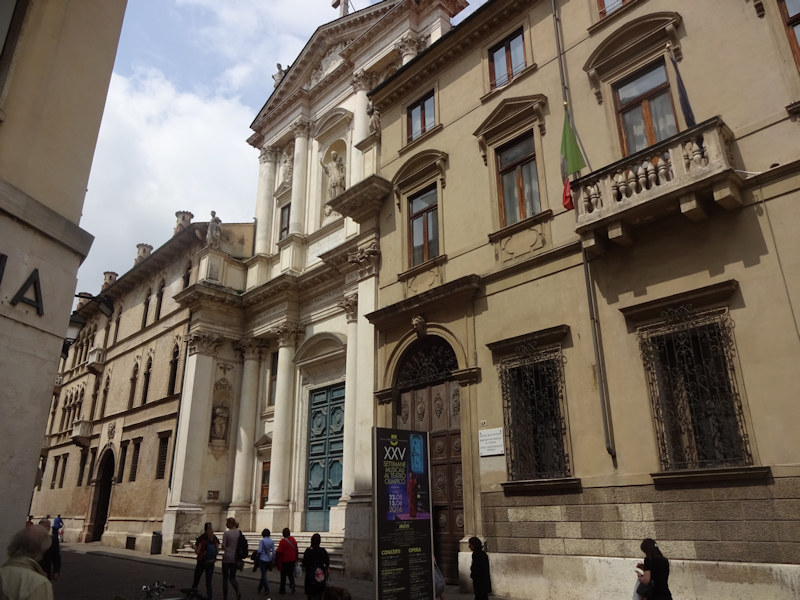
By the mid-2nd century BC, Vicenza ('Vicetia') was a Roman centre and stopping place along routes that subsequently became the Via Postumia military road across all of the northern Italian peninsula. It was evidently always overshadowed by nearby Padua and Verona, however, and throughout late- and post-Roman times, it seems to have been a plaything of Vandals, Visigoths and Huns, Ostrogoths, and Byzantine revanchists, and only became a more significant establishment under the Lombards in the 7th century and under the Franks in the 8th.
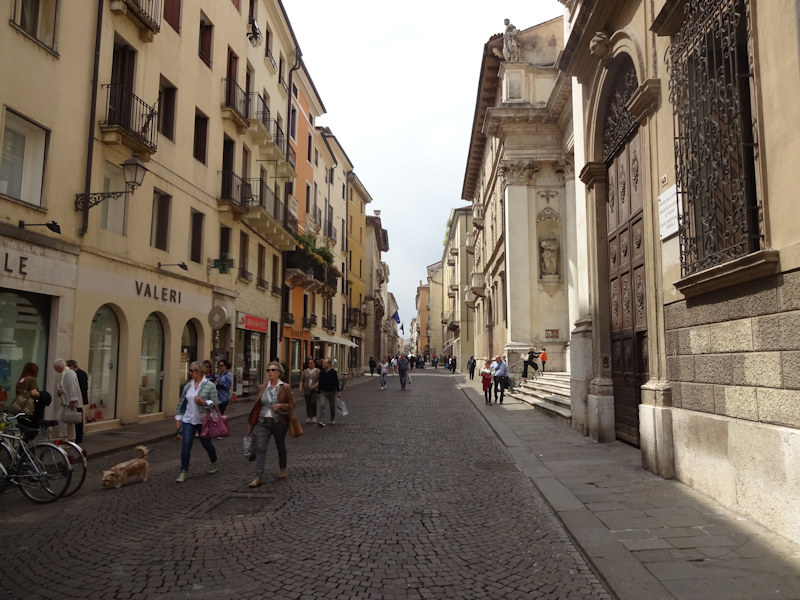
The amazing Via Palladio high street of Vicenza. At the turn of the millennium the Emperor Otto III turned the city over to be administered by its prince-bishop, a not uncommon administrative trick at the time, and it was able to develop as an oligarchic republic over time. The rivalries amongst Vicenza, Verona, Padua, and Treviso, and their ruling families at various times, resulted in what looks now like two centuries of civic and military chaos, even under the Veronese Della Scalas after 1311, but in 1404 Vicenca entered the Venetian orbit and prospered.

Napoleon occupied Vicenza in 1797, the Austrians occupied it after 1814, and the 'US Army Garrison Vicenza' has been here since 1965.

Recycling the old columns
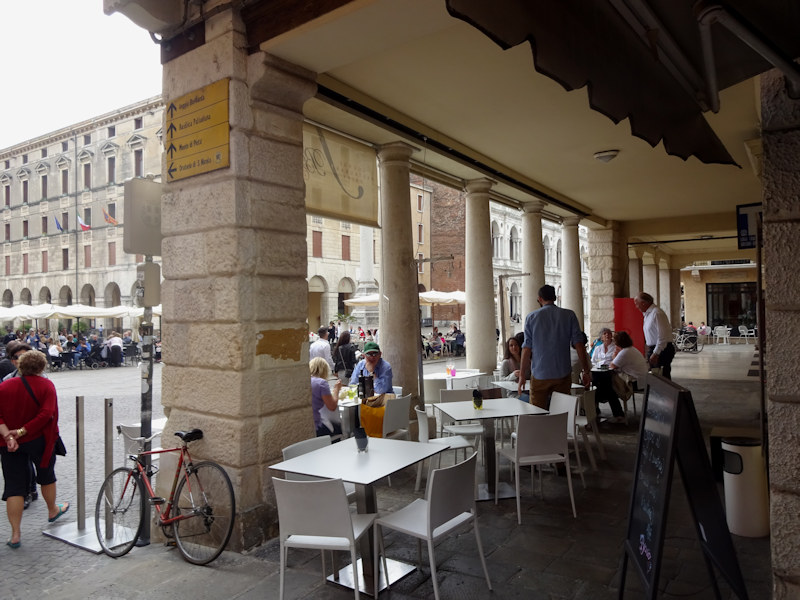
One block over from the Via Palladio, this is the Piazza delle Biade, facing into . . .
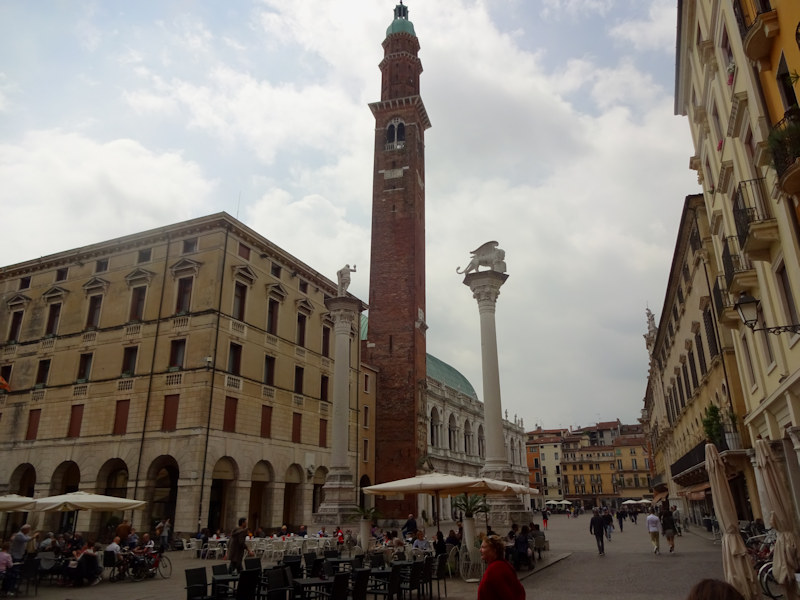
. . . the Piazza dei Signiori, the city centre. The huge Torre della Bissara, 82m high, is attested from at least 1174 and completed in 1444.
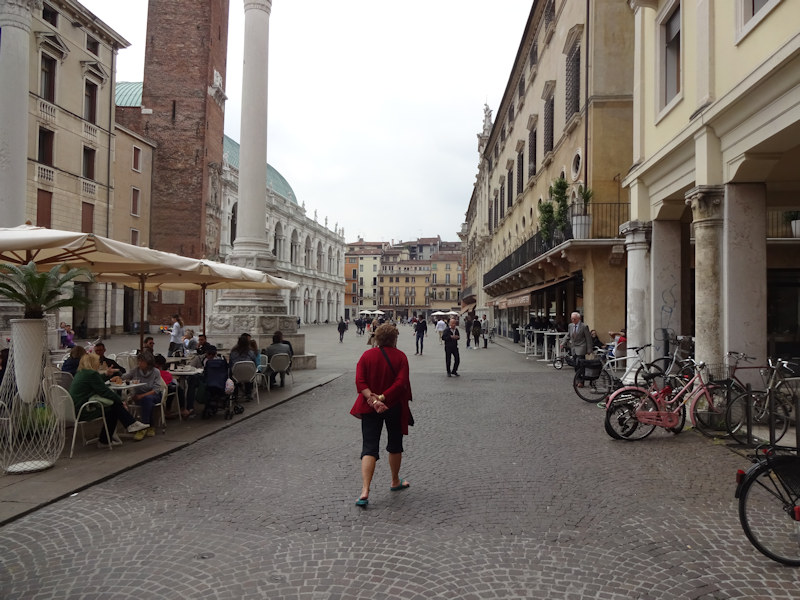
The Piazza dei Signiori, originally the Roman Forum and market area, has been at the heart of political life in the city since forever.
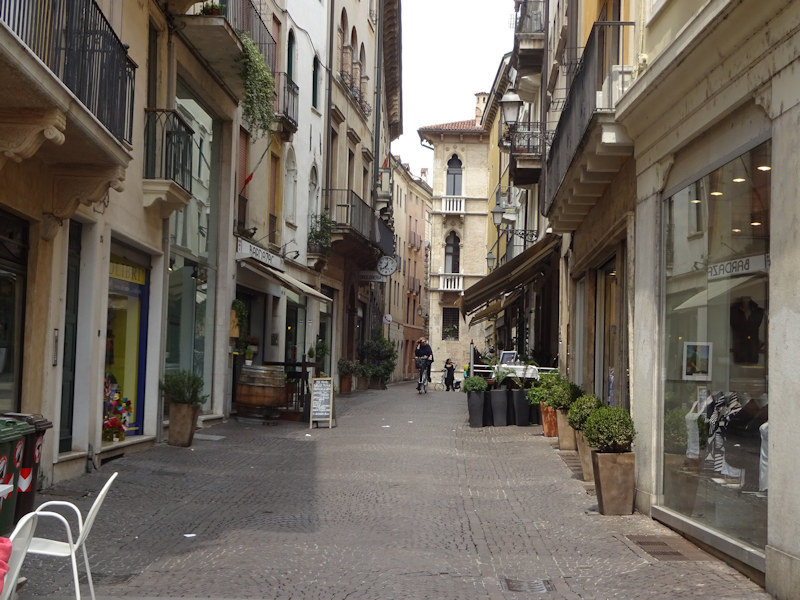
A side street of the Piazza, the Contrà Daniele Manin
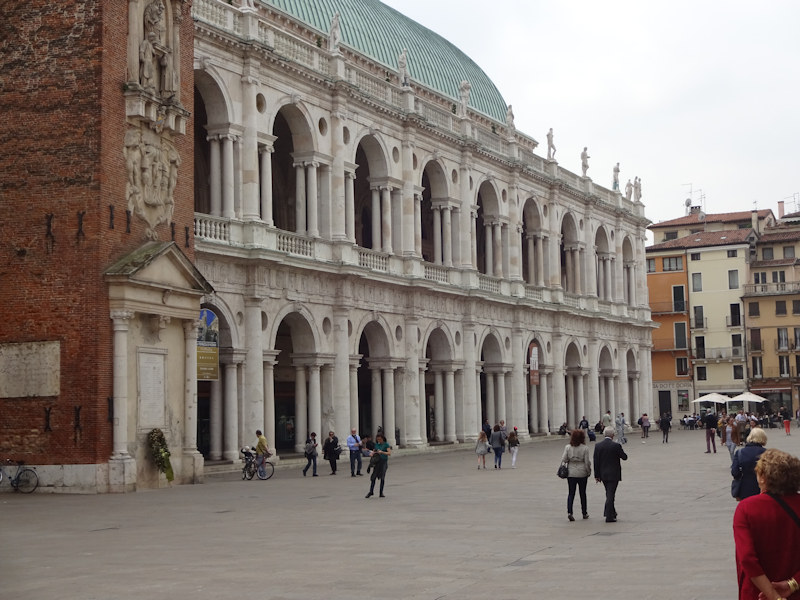
Alongside the pre-existing Bissara belltower, this is the famous Basilica Palladiana -- the Gothic 15th century Palazzo della Ragione, the seat of city government with shops below, partially collapsed in about 1496, and the search was on for an architect with a good plan to rebuild it. Palladio's design, basically adding a two story classical loggia all the way round the existing building, was approved in 1546 when he was 38, and the work began in 1549 and was completed in 1614.
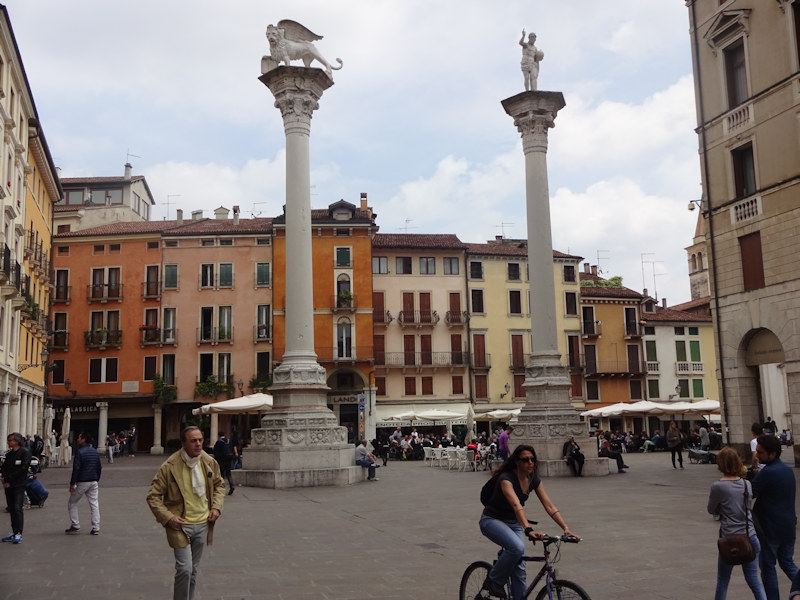
The two columns at the eastern end of the piazza, on the left the winged lion on Venice, erected in 1473, and on the right 'Christ the Redeemer', added in 1640.
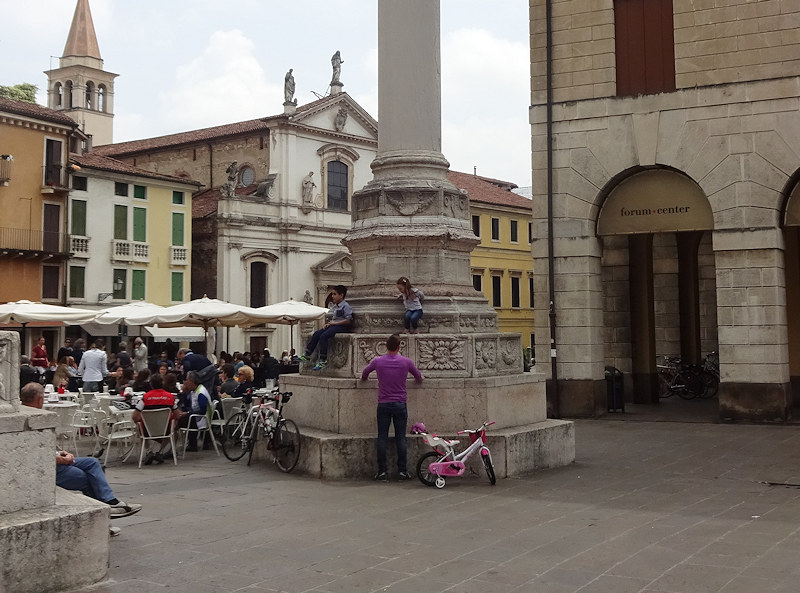
Kids know no fear
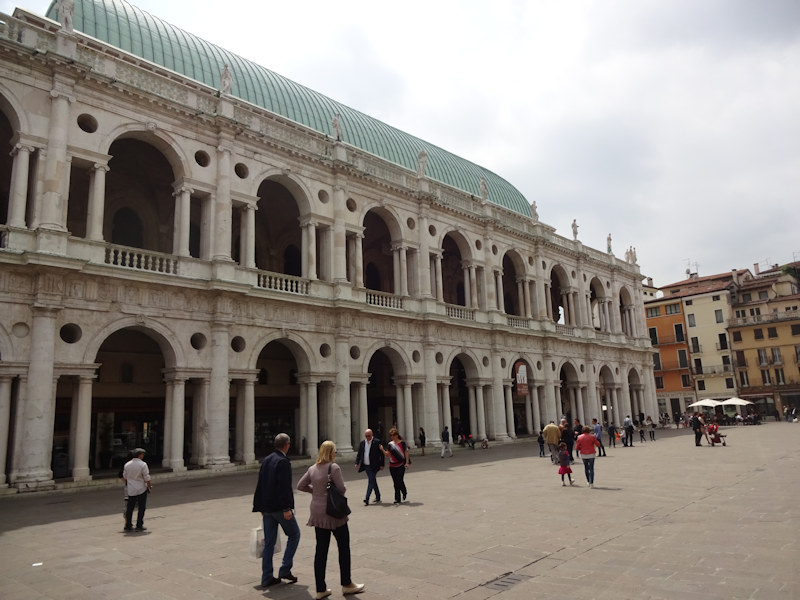
The Palladian 'basilica' (his word for it), with shops, a jewelry museum, a jazz club, etc., on the ground floor. The pre-Palladian copper-lined overturned-boat roof was inspired by Padua's Palazzo della Ragione.
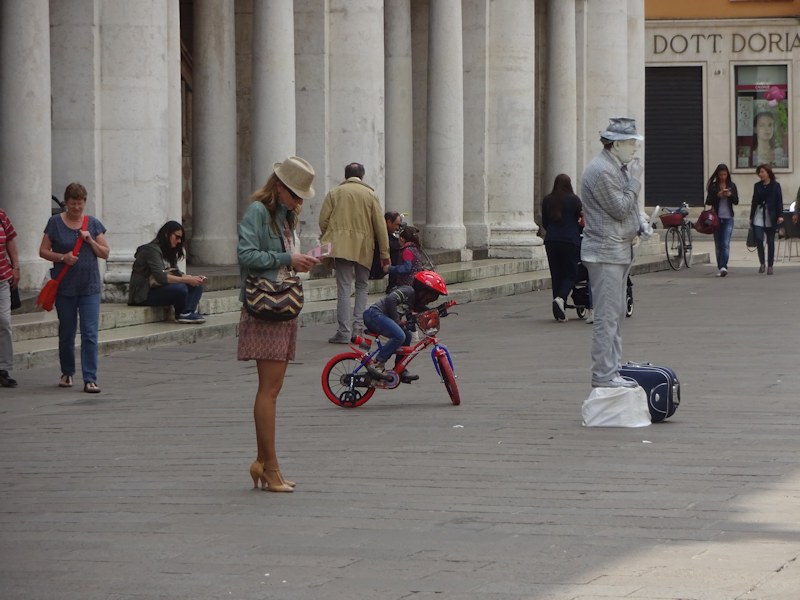
A rather pudgy 'Charlie Chaplin' white-painted motionless busker for coins
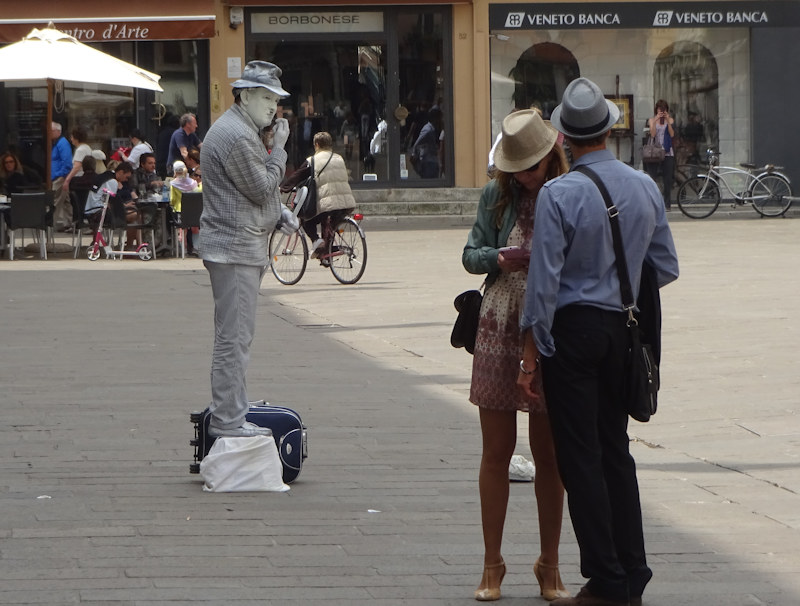
Charlie Chaplin briefly not motionless

Facing the Basilica Palladio is the Chiesa di San Vincenzo Martire, dedicated to the 3rd century St Vincent of Saragossa, said to have been a victim of Diocletian's persecutions; it was built over the 1300s to the 1700s, with its early 16th century façade stuck in the middle of the Palazzo del Monte di Pietà; this latter was built in the early 16th century to house a pawnshop and interest-free/low-interest loan bank for the poor, which had been established in 1486 following the expulsion of the Jewish money-lenders. It was substantially rebuilt following severe damages from Allied bombing of 18 March 1945.
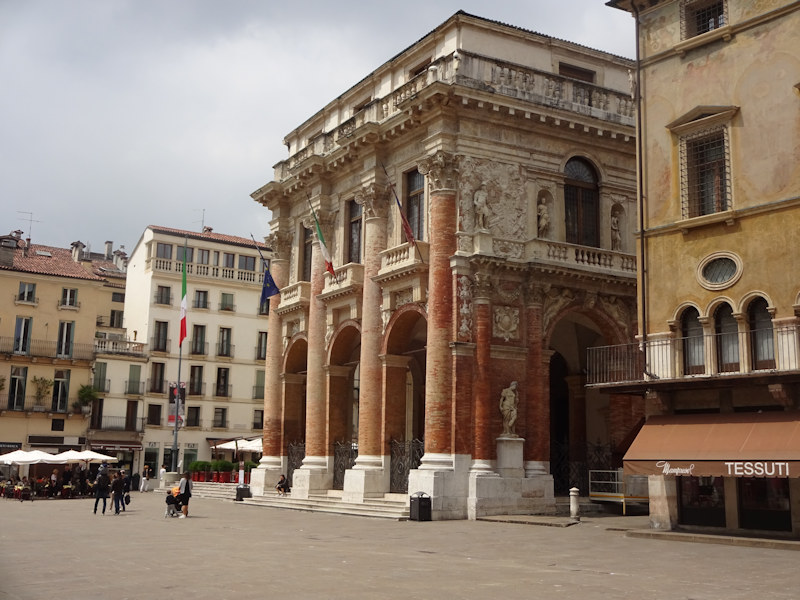
Also facing the Basilica, the Palazzo del Capitaniato, also designed by Palladio, in 1565, and completed in 1572, replaced medieval buildings on the site and was intended to serve as the residence of the head of the Venetian military authorities in Vicenza.
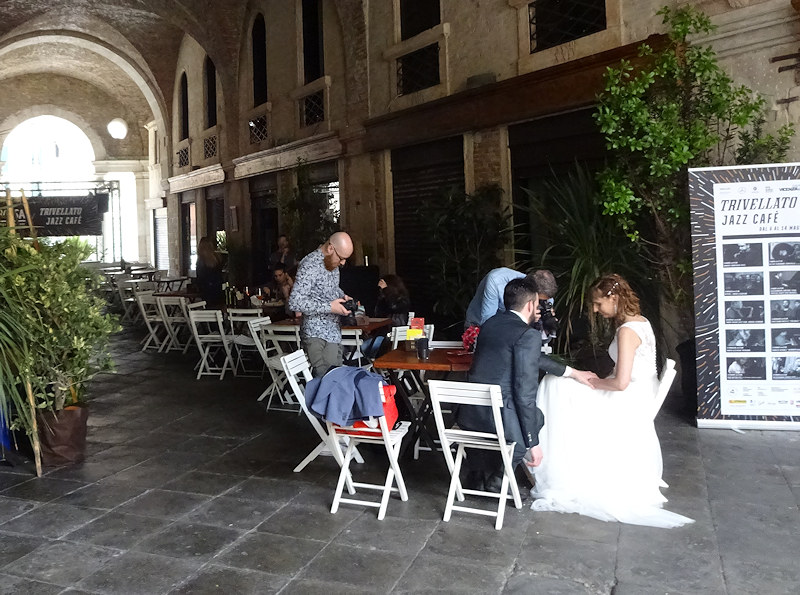
The formal wedding photos under the Basilica
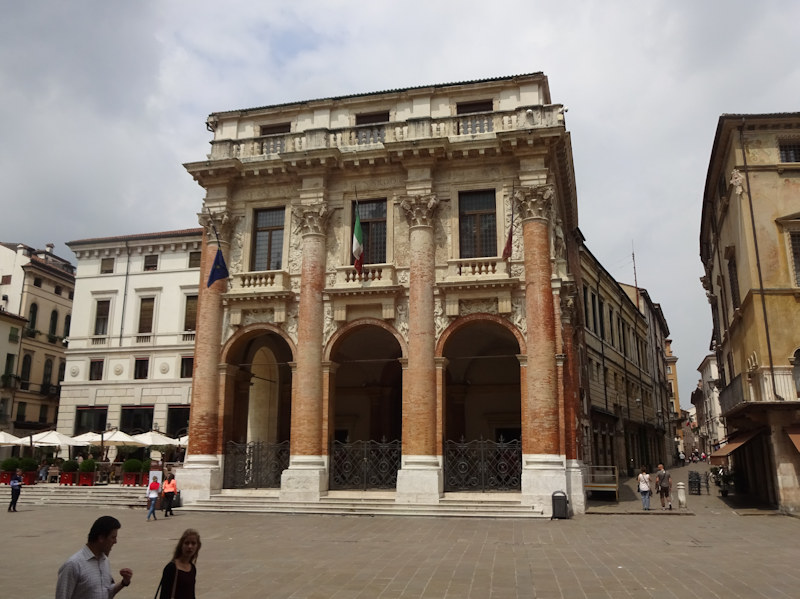
The Palazzo or Loggia del Capitaniato is presently in use by the Vicentine Town Council.

In the Piazzetta Palladio at the western end of the Basilica, a statue of Palladio his own good self
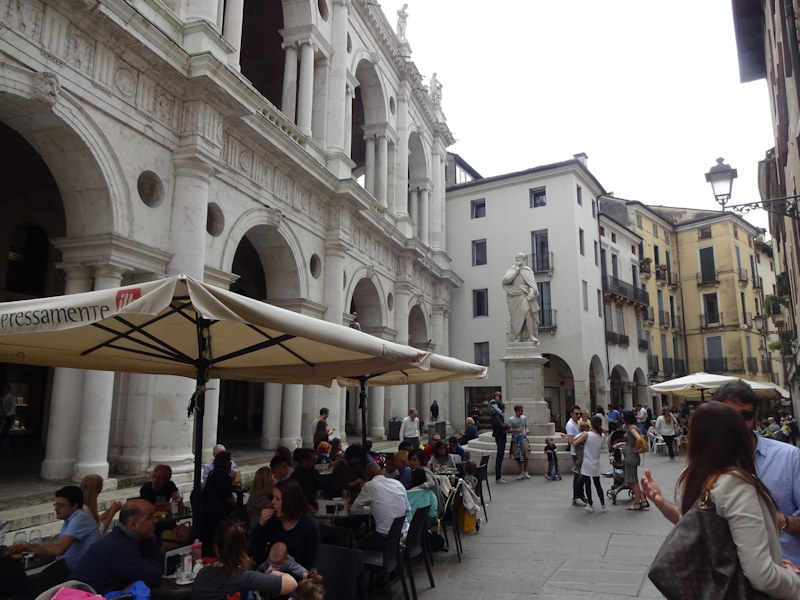
The Piazzetta Palladio
Next: westward towards the Duomo
      
     
  

 Feedback
and suggestions are welcome if positive, resented if negative, Feedback
and suggestions are welcome if positive, resented if negative,  .
All rights reserved, all wrongs avenged. Posted 23 July 2016. .
All rights reserved, all wrongs avenged. Posted 23 July 2016.
|
 Dwight Peck's personal website
Dwight Peck's personal website





























































